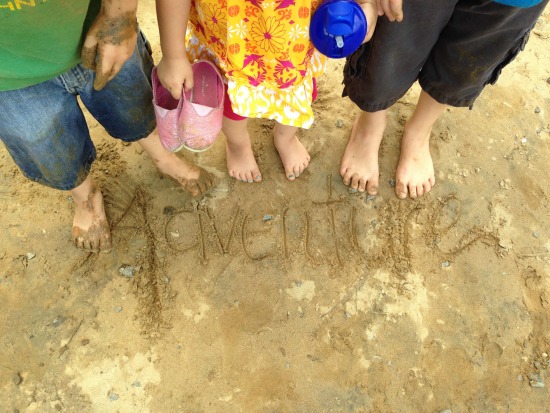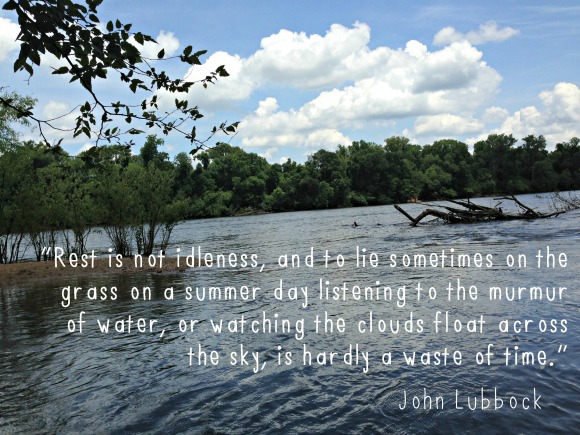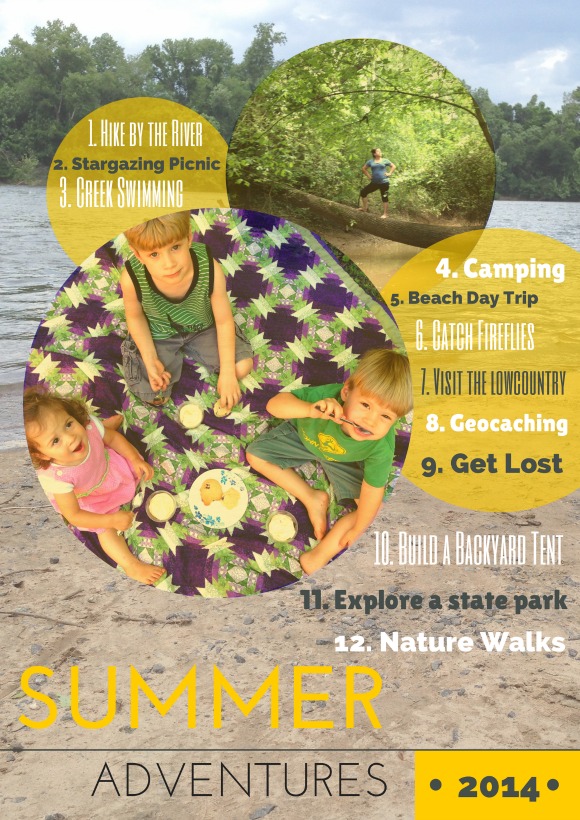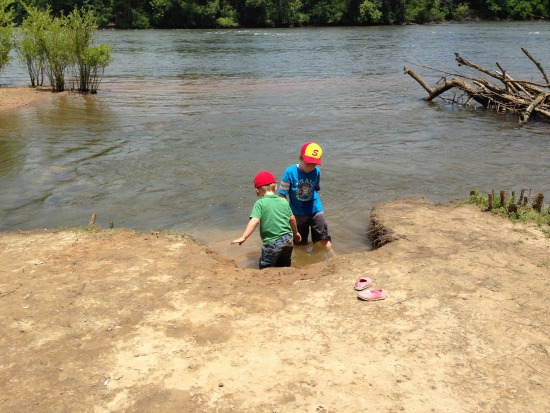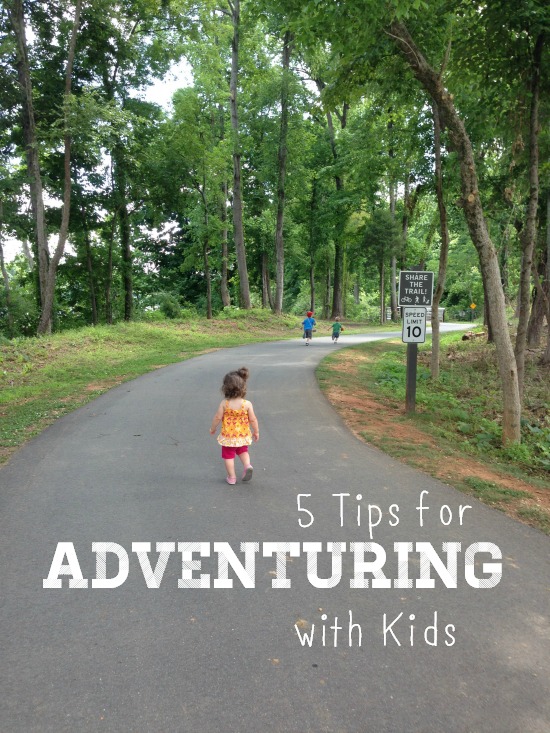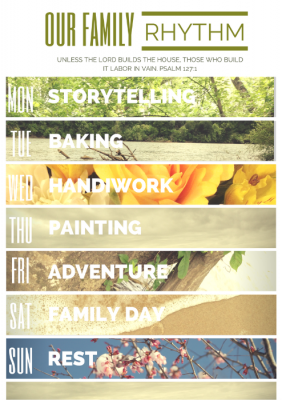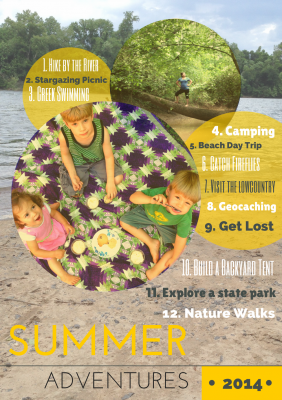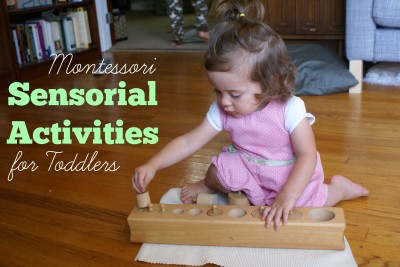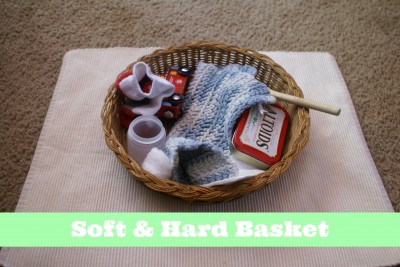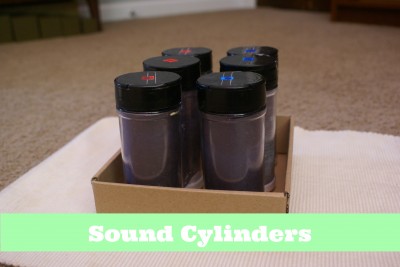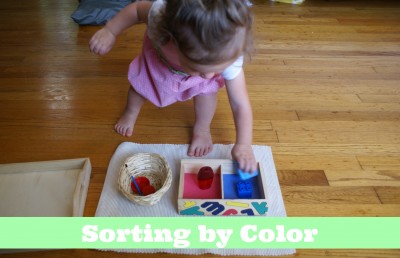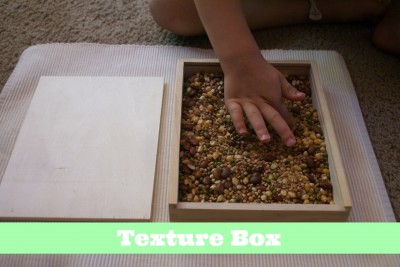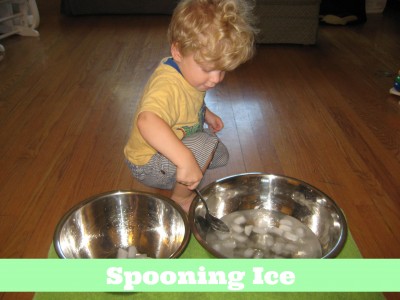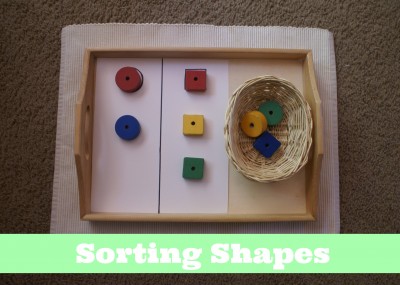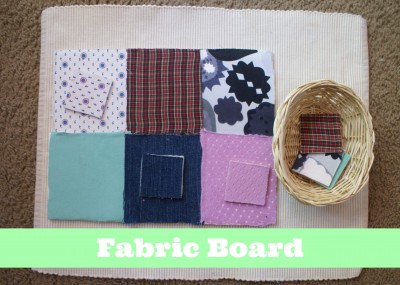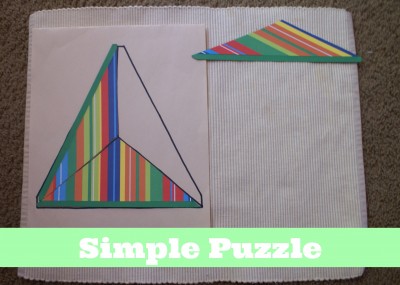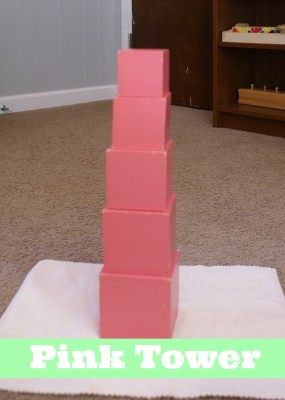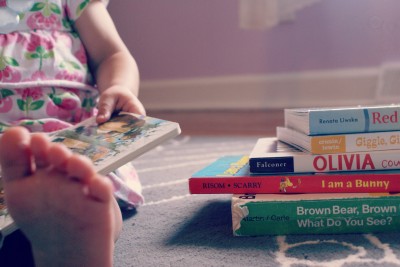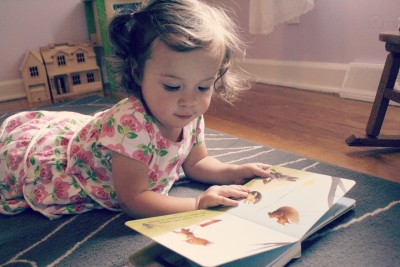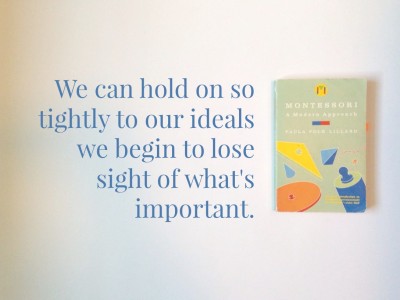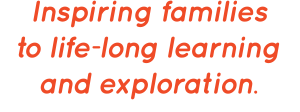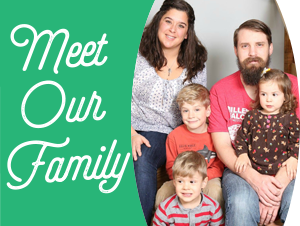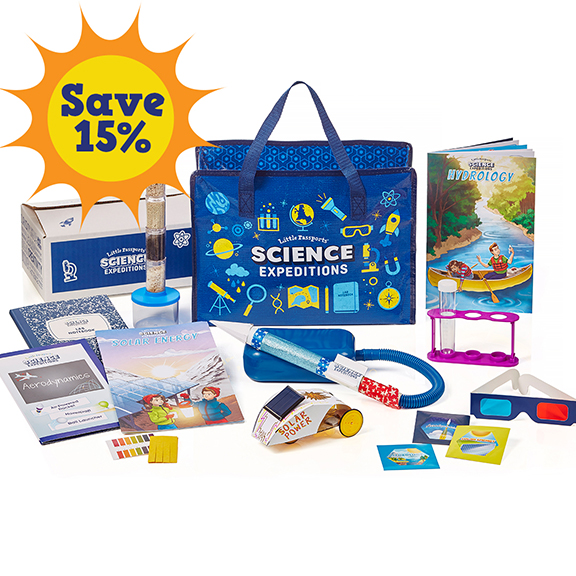While most of us embraced the summer season weeks ago, this Saturday, June 21st, marks the first official day of summer with the summer solstice!
Summer calls to mind watermelon dripping down the chins and chests of thirsty little ones, sun-kissed noses, ice cream sticking to chins and hands, feeling sand beneath your feet and the ocean breeze in your hair.
Reading books in the late afternoon, catching fireflies in the dark, dancing in the rain, and running through the sprinkler. Of course, summer brings with it mosquitoes, heavy pool bags, larger crowds, and humidity thick enough to cut (at least in the South).
But…summer, even though it’s not my favorite season, brings its own refreshing. A break from the busy, often calculating pace of the school year. A time to rest, recharge, and explore.
A goal of mine, as part of our family rhythm, is to find an adventure each week. Now before you raise an eyebrow to going on an adventure with kids (were you thinking mountain hiking, kayaking, trail blazing?), here’s my definition of an adventure:
An adventure is an expedition that differs from our normal day-to-day, that leads us to try something new or explore our surroundings in a different way.
Once a week the kids and I will go off eager to find our own adventure and come back with stories to tell. Last week, we took a walk by the river and the boys ended up wading in the water.
I know some of you are on the fence about exploring, but even with your misgivings I’d encourage you to try. Start with something short and simple, like taking a nature walk in a new park or visiting a children’s museum. Think of it as a bit of a break. Of course, you’ll still be parenting, which might mean correcting, problem-solving, and a bit of corralling (depending on your endeavor). But don’t let that lead you to think it’ll be more work.
I’ve found that when my children have more freedom in their surroundings, they believe better. When I throw down the rules and make them fit inside my box of what I think the day or activity should look like, I’m bound to meet resistance.
Give them freedom within safe boundaries. That’s why most of our adventures involve the great outdoors. I know some of my friends call me brave for taking my kids on a river walk and letting them get muddy to their waist, but honestly? That’s easier than a trip to Target where they’re trying to play hide and seek in between the shelves and aisles. Plus, we could all use a little more sunshine and fresh breezes.
5 Tips for Adventuring with Young Children
1. Keep it Simple. Pick an adventure you think your children will find appealing. They may not love it, but I believe it’s good for everyone to try new things. It doesn’t have to become a favorite. Start small. Pack light. Keep your expectations hopeful, but low. Don’t think of it as a disaster waiting to happen, but laugh at the challenges to come.
2. Fuel Up. Make sure everyone gets a hardy meal before you go. Fill them up with foods that will give them energy while you’re out and will keep them from getting hungry too quickly. It’s easier to travel without carrying an extra bag for lunch if you can. Bring light snacks and water to carry.
3. Be prepared. Carry the supplies you’ll need for your adventure. For our river walk, I took 2 water bottles, a snack to share, a few band aids, and essential oils to treat bug bites. I also stuck my ID, credit card, and Starbucks card (because coffee is always essential) in a pouch with my other go-to items.
4. Give them Freedom. Set the guidelines before you leave the car—physical boundaries, rules for safety, and a reminder to respect the people and environment you’ll encounter. These will change from adventure to adventure and young children may need to be gently reminded from time to time while you’re out and about, but once you set the guidelines they have freedom to play and explore. Just make sure you’re being
5. Breathe. Don’t worry wondering if someone is going to throw a fit, get hurt, or some other imaginary obstacle that’s yet to happen. Let this be your time to enjoy too! Our culture likes to tell us the only way to relax is sans-kids. That’s a lie. Sure, kids bring their own challenges, but if you let go of your mental hurdle that this is going to be hard, more than likely you’ll have fun. So much of enjoying life is in our perspective. Breathe deep and let go!
What adventures are you planning this summer?

